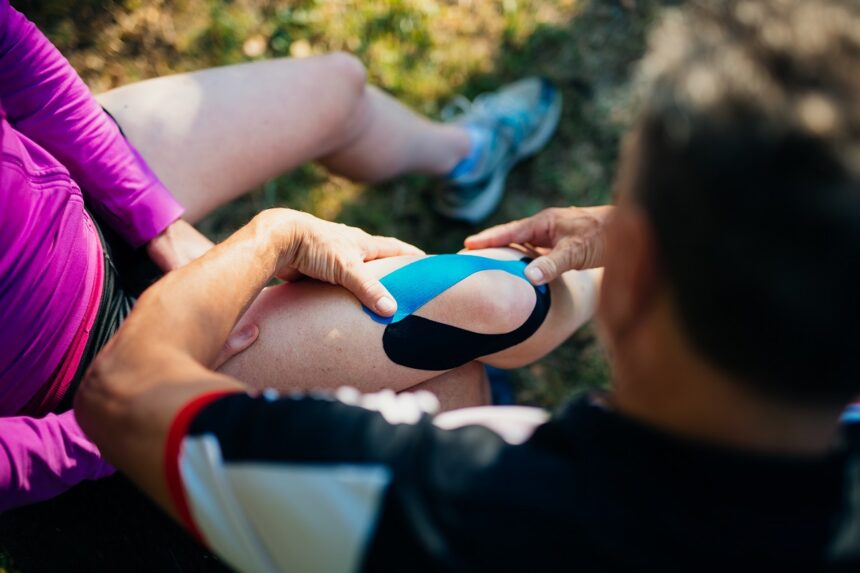Participating in sports offers numerous benefits, but it also carries the risk of injury. Unlike acute injuries that happen suddenly, overuse injuries develop over time from repetitive stress on muscles, joints, and bones. For any athlete, understanding these types of sports injuries is a key part of maintaining long-term health and performance. Recognizing the causes, symptoms, and treatment options can help you stay active and address issues before they become more serious.
What Causes Overuse Sports Injuries?
Overuse injuries occur when a specific part of the body is subjected to repeated strain without adequate time for recovery. This process can lead to micro-trauma in the tissues, which accumulates over time. Repetitive motions common in sports like running, swimming, or tennis place continuous stress on the same muscle groups and joints. When the body cannot repair the damage between activity sessions, inflammation and pain can result.
The development of these sports injuries often relates to training errors. A sudden increase in the intensity, duration, or frequency of activity may overload the body’s capacity to adapt. Improper technique is another common factor, as it can place uneven stress on certain body parts. Poor form during a golf swing or an incorrect running gait can contribute to the development of an overuse injury.
Athletes may also be predisposed to these injuries due to certain physical factors. Muscle imbalances, where some muscles are stronger than others, can alter body mechanics and lead to excessive strain on weaker areas. Playing on hard surfaces or using improper equipment, such as worn-out running shoes, may also increase the risk. These elements, combined with repetitive motion, create a scenario where tissue damage outpaces the body’s natural healing process.
How Do Athletes Spot Symptoms?
Identifying the early signs of an overuse injury can help you manage the condition effectively. Symptoms often start as a mild ache and progressively worsen if not addressed. Paying attention to how your body feels during and after activity is a practical first step.
- Pain that worsens with activity: You might notice discomfort that begins as you start an activity, subsides during it, and then returns afterward.
- Dull, aching pain: The pain is often described as a persistent ache in a specific area, even when at rest.
- Swelling or tenderness: The affected area may appear swollen or feel tender to the touch.
- Stiffness or loss of motion: You might experience reduced flexibility or stiffness in a joint or muscle.
These symptoms are signals from your body that a particular area is under too much stress. Recognizing them early allows for timely intervention, which can prevent the injury from becoming a more persistent problem. Ignoring these signs may lead to more significant sports injuries that require longer recovery periods.
What Treatments Promote Recovery?
When an overuse injury is identified, the primary goal of treatment is to allow the affected tissue to heal. The approach often involves a combination of rest and targeted therapies to reduce pain and restore function. Starting treatment as soon as symptoms appear can lead to a quicker and more complete recovery.
- Rest: The most direct treatment is to stop the activity that causes pain. This break gives the body time to repair the damaged tissue.
- Ice: Applying ice to the affected area for 15-20 minutes several times a day can help reduce swelling and numb the pain.
- Physical Therapy: A physical therapist will guide you through exercises designed to strengthen the affected area and correct any muscle imbalances.
- Technique Modification: Adjusting your form or technique can reduce the strain on the injured body part once you return to your sport.
These treatments focus on alleviating symptoms while addressing the underlying cause of the injury. A gradual return to activity is recommended to avoid re-injury. Listening to your body and progressing slowly helps you get back to your sport safely and confidently.
Consult a Specialist
Recognizing and managing overuse injuries is a proactive way to support your athletic longevity. These sports injuries develop gradually, but their impact can be significant if left unaddressed. Promptly identifying symptoms like persistent pain or swelling and initiating appropriate treatments can make a substantial difference in your recovery. If you are experiencing symptoms of an overuse injury, consulting a healthcare professional or a physical therapist can provide you with a clear diagnosis and a personalized recovery plan to help you return to your activities safely.





